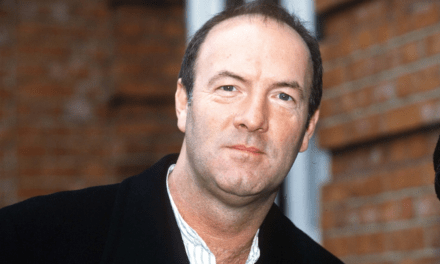Byzantium, a vampire film that incorporates both period detail and contemporary era in its tale of a mother-daughter relationship, has just hit the big screen and I’ve been working on a conference paper about flashbacks in vampire television, so I thought I’d gather some of my thoughts about period flashbacks in vampire TV for this blog.
Vampires are essentially immortal and thus, while contemporary vampire television series like The Vampire Diaries, True Blood or Being Human are generally set resolutely in the present, the epic scale of a vampire’s existence affords vast potential for period drama visited via flashback. From Dark Shadows to True Blood, most vampire television series have done flashbacks. In regular TV drama, like the cop show, a specific location allows fairly standard stories to acquire local colour. Using flashback gives us not only more geographical locations, but more locations in time. Flashbacks evoke different pleasures than regular vampire television, offering a display of period detail, in sets and costumes. Because these are flashbacks, though, they resist the way period drama often serves more as a means to display heritage properties than as a setting for drama, as has been argued about the wave of literary adaptations in the 1990s. In vampire TV, flashbacks are generally tied to the present-day narrative, so while we might enjoy extended flashbacks to the 1920s (featured in both True Blood and The Vampire Diaries) for the Gatsby-esque fashions, this is not just a display for our visual pleasure, narratively it produces drama. Stacey Abbott has extensively analysed the ways Angel’s “Are You Now or Have You Ever Been?” (2.2) intertwines two time periods, offering a dense visual rendering of the 1950s that unfolds as one single story taking nearly half a century (2009, 86).
Historical accuracy and interpretation may be an issue for period drama. Much of the value placed on some versions of period drama is about the authenticity of their reproduction—their period detail, and the research entailed in producing costumes, for example, receives much press. This does not mean that period drama is historically accurate nor, despite its attention to material details, is it necessarily realist. In anything from Roots to Pride and Prejudice, what we receive is, as Glen Creeber notes, ‘A version of the past that is implicitly aimed at and constructed for a contemporary, frequently nationally based, mass audience’ (2004, 21). Likewise, Julianne Pidduck, discussing costume films, argues that costume drama’s pasts ‘offer fantasy zones for the exploration of national identity, gender and sexuality’ (2004, 8). It is these ‘fantasy zones’ that lend themselves to fantasy television and vampire TV unashamedly offers versions of period rather than accurate historical rendering.
Think how many period flashbacks in vampire television take us to iconic and instantly recognisable versions of the past: the 20s, 50s or 60s, World War II and the American Civil War. We only need to see the costumes and maybe hear the music and we know exactly when we are. It is no coincidence that the twentieth century periods favoured for flashbacks in vampire TV are not only visually distinctive but they are generally times of social change or of conflict, eras where liminal, disruptive vampire figures are entirely at home. Vampire television also takes us to earlier periods—think history in the general rather than the specific—Vaguely Victorian or Mostly Medieval. The former affords productive tension for vampire television. Familiar vampire characters suddenly appear in formal period attire. Oh, look, they’re wearing old stuff and they’re all buttoned up, it must be a period flashback.
Thus vampire TV gets to have it both ways. It delivers the delight in costume, in details of dress, hairstyling, and setting (often rather sketchy) and gives that sense of decorum, repression and convention, only to break it. We anticipate the breaking of surface propriety because we know the vampire characters who will do it. In the True Blood episode ‘Authority Always Wins’ (5.3) it’s 1905 in San Francisco and the Edwardian clothes might suggest propriety and decorum but Pam is running a brothel, and Eric saves her from a mugging with bloody violence.

We’ve seen them unbuttoned and bloody long before we saw them buttoned up, so it’s only a matter of time before the fangs come out and the clothes come off.
The term costume drama emphasizes a performance of the past—something writ large in vampire television flashbacks where vampires can appear, recognisably themselves, but slightly estranged by period costume and setting. They are versions of themselves in a version of history. Thomas Higson describes 1990s heritage drama as offering a pastiche of the past: vampire television sometimes verges on parody. In this sense, it does not matter that period flashbacks on vampire TV are not very authentic, or even very well-realised in terms of epic scale and period detail, especially compared to ‘real’ costume drama.
Moreover, the pleasures of period costume and the tension between repression and excess are not restricted to the traditional female protagonist of heritage drama. The examples I have used here feature male vampire characters. This tendency might be dated from the 1995 BBC Pride and Prejudice, where Colin Firth’s Darcy was foregrounded in accord with the characteristics of costume drama identified by Pidduck: body, desire, and romance. In an attempt to make his character more sympathetic and therefore a suitable match for Elizabeth in the eyes of a modern audience, Darcy was made more central and viewers received intimate glimpses of him bathing, or at a fencing lesson. The camera lingers on Darcy and he becomes the object of the gaze. Starting, perhaps, with Buffy the Vampire Slayer, vampire TV has adopted similar tactics and promotional images certainly play on the visual appeal of smouldering male vampire protagonists. This appeal is not muted by moving from the contemporary to the historical, rather desire is deferred as viewers anticipate the disruption of social niceties and the excessive intimacy of vampirism. Stefan and Damon Salvatore as humans from the early 1800s in flashbacks from season 1 of The Vampire Diaries are often presented as direct successors of Firth’s lake-swimming Darcy.

By situating its histories as part of a fantasy narrative including vampires, vampire TV series also allows the viewer some distance. Unlike a regular costume drama, we are not immersed in the period detail consistently. The nature of flashback means that there is often switching between past and present, or a frame narrative that takes us into the vampire history. Viewers of vampire television are encouraged to see period flashbacks as a subjective, experienced version of the past rather than as factual history, back story about individual vampire characters, not political or social history. Both The Vampire Diaries and True Blood have used period imagery to promote their series, effectively selling images of vampire Bill in a Civil War photograph with the tagline ‘life goes on,’ or the promise that we can ‘see how it all began’ through a flashback focused on ‘the original vampire family.’ Indeed, one of the effects of period flashback in vampire TV is to highlight the supernatural immortality or longevity of the vampire, their distance from typical human experience.
While Being Human uses flashback more restrainedly (perhaps for budgetary reasons), its season 5 episode featuring Lady Mary, the ghost of one of vampire Hal’s victims, consciously engages with and even parodies televisual period drama without extensive flashback. Hal tries to protect Lady Mary from the present and maintains a façade of the genteel past not unlike the simulacra of heritage offered by period drama, yet fellow ghost Alex discovers that Mary herself is unwilling to remain contained by heritage surroundings and is actually a voyeur of twenty-first century social interaction. The episode is called ‘Pie and Prejudice’ (5.3).

Thomas Higson describes the way costume drama conveys ‘intimate epics’. In such drama, he states, lavish period details ‘create a fascinating but self-enclosed world. They render history as spectacle, as separate from the viewer in the present, as something over and done with, completed, achieved’ (95, original emphasis). Of course, with vampire TV, a period flashback usually involves a vampire character who exists in both the past and the present so that history is far from ‘over and done with’. Yet the feeling of separateness from the history depicted remains: what such flashbacks allow us is an intimate glimpse into the past of a character whose long existence is almost unimaginable in human terms. When True Blood reveals the story of Bill’s turning by Lorena, it emphasises that he is now distanced from his own human life and from human history. He may be able to view his family on the porch of their home but as a vampire he can no longer be part of their lives.
Such critical distance allows vampire TV to mobilize period flashback in many ways: as iconic imagery, as parody and intertextuality, as backstory and emotional resonance rounding out the popular trope of the sympathetic vampire, who suffers down the years under the curse of vampirism. Best of all, like the series of children’s books, vampire television is guaranteed to offer us all the best and goriest bits—the horrible history. After all, to paraphrase Lady Mary, ‘All that thee and thou bollocks can really get on your tits’.
Lorna Jowett is a Reader in Television Studies at the University of Northampton. She is the co-author with Stacey Abbott of TV Horror: Investigating The Dark Side of the Small Screen (2012) and author of Sex and the Slayer: A Gender Studies Primer for the Buffy Fan (2005). She has published many articles on television, film and popular culture, and is particularly interested in genre, gender and television drama.




